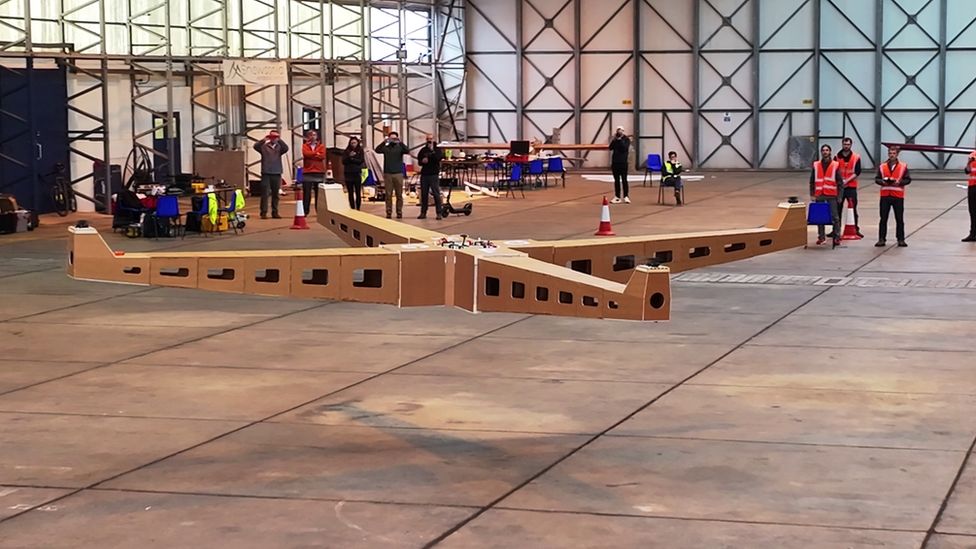The biggest unmanned quadcopter in the world was constructed by a team of engineers from the University of Manchester using just foamboard. The drone, which measures 21 feet (6.4 meters) from corner to corner, is a work of engineering genius and a testament to the potential of inexpensive materials for making airplanes.
The Giant Foamboard Quadcopter (GFQ), sometimes known as the drone, has four electric motors that enable it to lift up to 55 lbs (25 kg) of cargo. Using a mix of GPS and in-built sensors, it is also capable of flying on its own.

The GFQ was constructed as a component of an investigation into the use of inexpensive materials for lightweight aircraft construction. A core of foam layered between paper is what gives foamboard its name. It is the perfect material for drones since it is affordable, lightweight, and strong.
The Snowdonia Aerospace Centre in Wales hosted the GFQ’s inaugural flight in July 2023. The GFQ successfully completed the flight, demonstrating its stability and maneuverability.
The GFQ team is now trying to enlarge the drone. Additionally, they are looking at using foamboard for tiny manned aircraft as well as fixed-wing drones.
Drones made of cardboard are not just used in academia. Since March 2023, the Ukrainian business SYPAQ has started receiving fixed-wing cardboard drones from Australia. These drones can transport payloads like medical supplies and blood and are simple to manufacture. They are also more suited for usage in war zones since they are less detectable to radar than conventional drones.
According to some sources, Ukrainian soldiers modified the SYPAQ drones to carry weapons. The corporation, however, has not verified this.
Conclusion
A notable advance in drone technology is the creation of the enormous foam board quadcopter. This offers up new opportunities for the usage of drones in a number of applications and illustrates the potential of inexpensive materials for aircraft building.